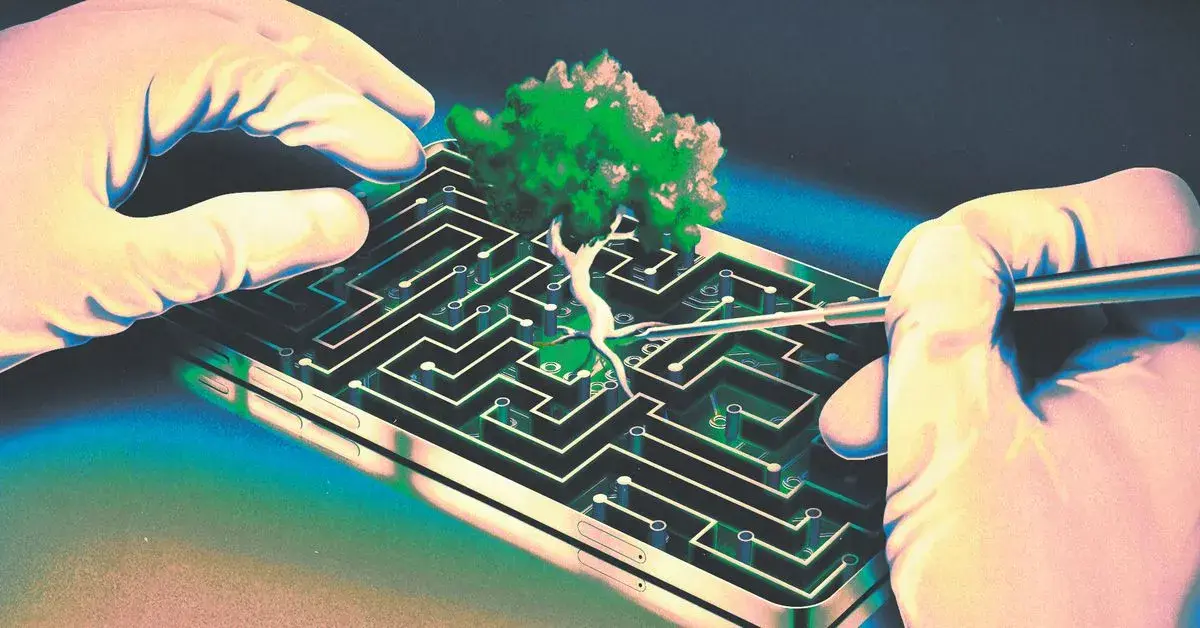- cross-posted to:
- sustainabletech@lemmy.sdf.org
- cross-posted to:
- sustainabletech@lemmy.sdf.org
Five of the MacBooks were “activation locked,” meaning the prior owner had forgotten to wipe the device and nobody else could reactivate it.
There’s a pretty good reason to want it not to be easy to bypass that particular restriction, as well as on cell phones – it discourages theft. If you steal a cell phone and you can’t wipe it to a factory state without the owner being involved, it’s kind of hard to sell it.
Apple has come under fire for other repair-hostile design choices. Over the years, many of its devices used “pentalobe”-shaped screws, which were once very hard to find screwdrivers for and featured glued-in batteries that are difficult, if not impossible, to replace.
Heh. Security bits alone are a comparatively minor hurdle. The original Mac 128K and several of its successors needed a 9-inch-long driver plus a Torx bit.
https://www.micromac.com/products/macopener.html
https://www.folklore.org/StoryView.py?story=Diagnostic_Port.txt
Expandability, or the lack thereof, was far and away the most controversial aspect of the original Macintosh hardware design. Apple co-founder Steve Wozniak was a strong believer in hardware expandability, and he endowed the Apple II with luxurious expandability in the form of seven built-in slots for peripheral cards, configured in a clever architecture that allowed each card to incorporate built-in software on its own ROM chip. This flexibility allowed the Apple II to be adapted to a wider range of applications, and quickly spawned a thriving third-party hardware industry.
But Jef Raskin had a very different point of view. He thought that slots were inherently complex, and were one of the obstacles holding back personal computers from reaching a wider audience. He thought that hardware expandability made it more difficult for third party software writers since they couldn’t rely on the consistency of the underlying hardware. His Macintosh vision had Apple cranking out millions of identical, easy to use, low cost appliance computers and since hardware expandability would add significant cost and complexity it was therefore avoided.
Apple’s other co-founder, Steve Jobs, didn’t agree with Jef about many things, but they both felt the same way about hardware expandability: it was a bug instead of a feature. Steve was reportedly against having slots in the Apple II back in the days of yore, and felt even stronger about slots for the Mac. He decreed that the Macintosh would remain perpetually bereft of slots, enclosed in a tightly sealed case, with only the limited expandability of the two serial ports.
Mac hardware designer Burrell Smith and his assistant Brian Howard understood Steve’s rationale, but they felt differently about the proper course of action. Burrell had already watched the Macintosh’s hopelessly optimistic schedule start to slip indefinitely, and he was unable to predict when the Mac’s pioneering software would be finished, if ever. He was afraid that Moore’s Law would make his delayed hardware obsolete before it ever came to market. He thought it was prudent to build in as much flexibility as possible, as long as it didn’t cost too much.
Burrell decided to add a single, simple slot to his Macintosh design, which made the processor’s bus accessible to peripherals, that wouldn’t cost very much, especially if it wasn’t used. He worked out the details and proposed it at the weekly staff meeting, but Steve immediately nixed his proposal, stating that there was no way that the Mac would even have a single slot.
But Burrell was not that easily thwarted. He realized that the Mac was never going to have something called a slot, but perhaps the same functionality could be called something else. After talking it over with Brian, they decided to start calling it the “diagnostic port” instead of a slot, arguing that it would save money during manufacturing if testing devices could access the processor bus to diagnose manufacturing errors. They didn’t mention that the same port would also provide the functionality of a slot.
This was received positively at first, but after a couple weeks, engineering manager Rod Holt caught on to what was happening, probably aided by occasional giggles when the diagnostic port was mentioned. “That things really a slot, right? You’re trying to sneak in a slot!”, Rod finally accused us at the next engineering meeting. “Well, that’s not going to happen!”
Even though the diagnostic port was scuttled, it wasn’t the last attempt at surreptitious hardware expandability. When the Mac digital board was redesigned for the last time in August 1982, the next generation of RAM chips was already on the horizon. The Mac used 16 64Kbit RAM chips, giving it 128K of memory. The next generation chip was 256Kbits, giving us 512K bytes instead, which made a huge difference.
Burrell was afraid the 128Kbyte Mac would seem inadequate soon after launch, and there were no slots for the user to add RAM. He realized that he could support 256Kbit RAM chips simply by routing a few extra lines on the PC board, allowing adventurous people who knew how to wield a soldering gun to replace their RAM chips with the newer generation. The extra lines would only cost pennies to add.
But once again, Steve Jobs objected, because he didn’t like the idea of customers mucking with the innards of their computer. He would also rather have them buy a new 512K Mac instead of them buying more RAM from a third-party. But this time Burrell prevailed, because the change was so minimal. He just left it in there and no one bothered to mention it to Steve, much to the eventual benefit of customers, who didn’t have to buy a whole new Mac to expand their memory.
There’s no money to get in users repairing or expanding their own devices. Fuck Apple. I’m glad all their hardware gets jailbroken quickly. Maybe one day the company realise it’s not a fight they can win. Until that day I will not be purchasing another apple device again.
Even if that issue were to be solved, the endless vendor lock-in and deliberate incompatibilities would remain.
I stopped buying Apple products years ago because they’re all about preventing people from truly owning the hardware they buy. Given how effective it is at extracting as much money from us as possible for as long as possible, I doubt that will ever change.
So it’s really a slippery slope of customer rights!
…I don’t trust it; even coming from a Post-Jobs version of Apple.
Apple only ever cares about money. The fact that they make hardware that is beloved by many of the computer illiterate is unimportant…that’s only the way they make money. By exploiting people who don’t want to take the time to properly understand their computer hardware.
The only reason why they care now is that there’s a big enough group of those customers who are technically savvy who are holding their feet to the fire and loudly informing the rest of the masses who are less knowledgeable about this kind of exploitative behavior and reminding everyone that they’re not the only ones losing massive amounts of data and time to spontaneous hardware failures that were made intentionally irreparable by design because it benefits Apple’s profits.
the fact that they make hardware that is beloved by many of the computer illiterate is unimportant
Painting Apple users as “computer illiterate” makes me think you don’t really have a good understanding of their entire customer base. Macs have been very popular with SWE’s, for close to 20 years now.
Yeah, so many companies require mac’s for their coding needs. Any classes I’ve ever taken have used macbooks
🤖 I’m a bot that provides automatic summaries for articles:
Click here to see the summary
Signed into law last month by Governor Gavin Newsom, the Right to Repair Act guarantees everyone access to parts, tools, and manuals needed to fix their electronic devices — something industry-backed research shows can reduce both waste and carbon emissions but which Apple, the world’s most valuable company, has aggressively lobbied against for years.
As device detectives at repair guide site iFixit.com soon discovered, the iPhone 15 is riddled with software locks that cause warning messages to pop up or functionality to be lost if parts are replaced with new ones that weren’t purchased directly from Apple.
Despite the environmental benefits of increased repair access, some of the world’s biggest tech companies, including Apple, Microsoft, Amazon, Alphabet, Meta, and Tesla, have spent millions convincing lawmakers not to support it.
John Deere has even claimed that greater repair access will allow farmers to tamper with the emissions controls on their tractors in violation of the Clean Air Act — a notion the Environmental Protection Agency recently refuted.
Wiens pointed to Nest’s decision to disable the Revolv smart home hub in 2016 and the demise of the company that made the SmartDry laundry sensor last year as examples of how manufacturers can turn expensive pieces of hardware into useless bricks by dropping software support.
With the European Parliament currently weighing another new regulation aimed at making repair more attractive to consumers, advocates are pressing EU lawmakers to take a more aggressive stance on these issues, including calling for a full ban on parts pairing.
Saved 92% of original text.








